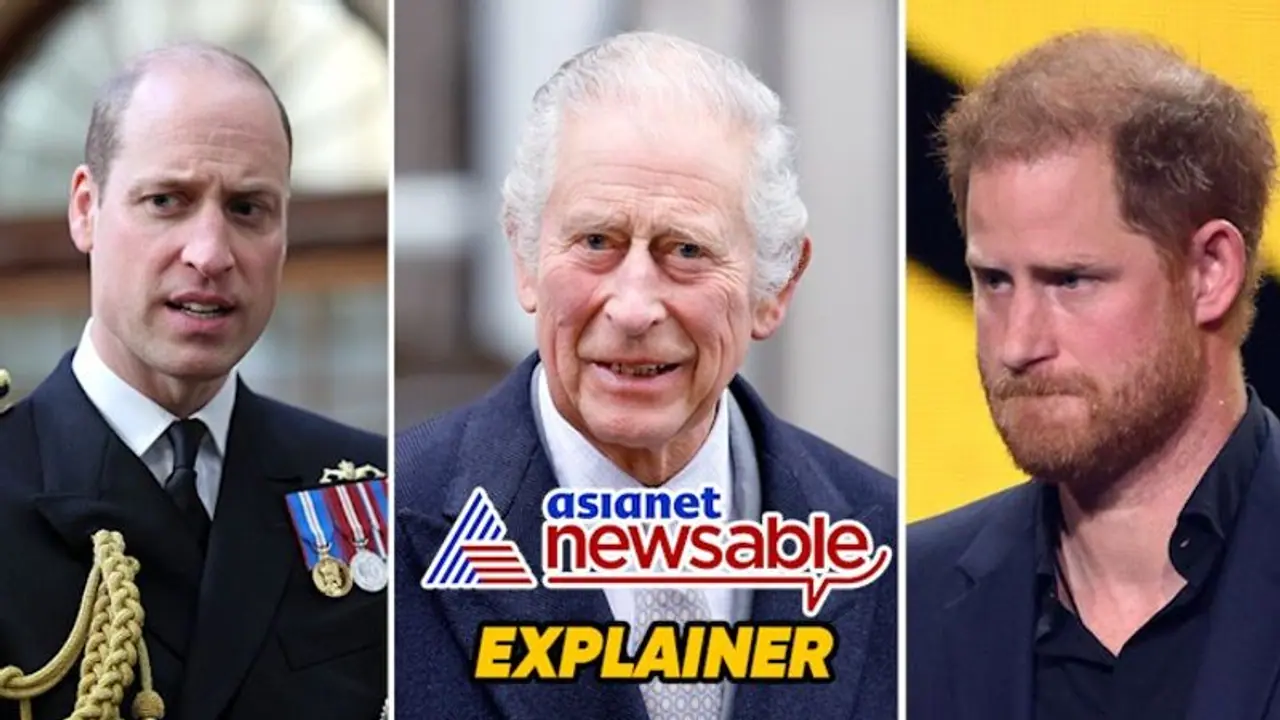Britain’s King Charles III has started a schedule of regular treatments after being diagnosed with cancer following his recent hospital procedure for benign prostate enlargement and will be postponing his public duties, Buckingham Palace has said.
As the icy winds of winter swept across London, the Royal Family found themselves engulfed in a series of health crises that sent shockwaves through the nation and beyond. What began as a routine update on the Princess of Wales' recovery from surgery soon spiraled into a whirlwind of worry and concern.

First came the news of the King Charles III's impending procedure for an enlarged prostate, a revelation that left the public reeling with unexpected anxiety. As cameras descended upon the royal hospital in London, the gravity of the situation became all too apparent. Simultaneously, the Duchess of York, Sarah Ferguson, disclosed her battle with skin cancer, adding yet another layer of distress to an already fraught period.
Yet, the darkest clouds had yet to gather, for the latest announcement has unveiled a more ominous truth: the 75-year-old King is facing a form of cancer. “During The King’s recent hospital procedure for benign prostate enlargement, a separate issue of concern was noted. Subsequent diagnostic tests have identified a form of cancer,” read the Buckingham Palace statement.
“His Majesty has today commenced a schedule of regular treatments, during which time he has been advised by doctors to postpone public-facing duties. Throughout this period, His Majesty will continue to undertake State business and official paperwork as usual,” it said.
“He remains wholly positive about his treatment and looks forward to returning to full public duty as soon as possible. His Majesty has chosen to share his diagnosis to prevent speculation and in the hope it may assist public understanding for all those around the world who are affected by cancer,” it added.
In households across the realm, the familiar questions echo—where? How severe? What's next?—but answers remain elusive, shrouded in a veil of royal discretion.
In this era of social media, royal communications have evolved, yet the weight of the news remains palpable. Despite the polished facade of palatial updates, the Royal Family is, at its core, a family grappling with uncertainty and fear. The once-resilient image of regal strength has given way to a vulnerability seldom seen in summery celebrations past.
However, adversity has a curious way of uniting even the most fractured bonds. Prince Harry's imminent journey from the US to visit his ailing father serves as a beacon of hope amid the turmoil. The prince's gesture, devoid of complication or hesitation, symbolizes a nascent effort to bridge divides and offer solace in troubled times.
Meanwhile, Prince William, the heir apparent, faces a dual burden of familial illness. Tasked with shouldering increased public duties, he navigates a delicate balance between personal anguish and regal responsibility. His wife's convalescence leaves a void in the royal roster, depriving the palaces of one of their most steadfast figures in times of crisis.
As the younger generation grapples with unforeseen challenges, Queen Camilla emerges as a pillar of stability amidst uncertainty. From the periphery of royal life two decades prior, her journey to prominence symbolizes a shifting landscape within the monarchy. With the departure of Prince Harry and Prince Andrew, and the incapacitation of the King and Princess of Wales, the ranks of working royals dwindle, leaving a void that grows ever more conspicuous.
For the King himself, the weight of duty persists even in the throes of illness. Though confined to the confines of paperwork and private meetings, his absence from public engagements is keenly felt. His genuine enthusiasm for connecting with the masses remains unmatched, a testament to his unwavering commitment to his people.
Yet, amidst the uncertainty, a flicker of transparency emerges. The decision to disclose the King's health struggles underscores a newfound willingness to confront taboo topics and raise awareness. However, behind the veneer of openness lies a guarded reserve, leaving the future shrouded in ambiguity.
In the corridors of power and privilege, the Royal Family grapples with mortality and fragility, confronting the stark reality of their own mortality. As the world watches with bated breath, the unfolding saga serves as a poignant reminder that even the most illustrious of dynasties are not immune to the capricious whims of fate. In the face of adversity, unity prevails, offering a glimmer of hope in the bleakest of midwinters.
Here's a look at the order of succession to the throne:
1. Prince William, the firstborn son of Charles and the late Princess Diana, holds the title of the Prince of Wales. He is married to Kate, who is also known as the Princess of Wales. Their three children are next in line to the throne.
2. Prince George of Cambridge, born in July 2013.
3. Princess Charlotte of Cambridge, born in May 2015.
4. Prince Louis of Cambridge, born in April 2018.
5. Prince Harry, the younger son of Charles and Diana, has stepped away from his royal duties while maintaining his position in the line of succession.
6. Archie Mountbatten-Windsor, born to Harry and Meghan, Duchess of Sussex, in May 2019.
7. Lilibet Mountbatten-Windsor, born to Harry and Meghan in June 2021.
8. Prince Andrew, Queen Elizabeth II and Prince Philip's second-eldest son.
9. Princess Beatrice, elder daughter of Andrew and his former wife, Sarah Ferguson.
10. Sienna Elizabeth, daughter of Beatrice and Edoardo Mapelli Mozzi, born in September 2021.
11. Princess Eugenie, Andrew and Ferguson's younger daughter.
12. August Brooksbank, born to Eugenie and James Brooksbank in Feb. 2021.
13. Ernest Brooksbank, born to Eugenie and James Brooksbank in May 2023.
14. Prince Edward, the queen and Philip's youngest child.
15. James, Viscount Severn, son of Edward and his wife Sophie, Countess of Wessex.
